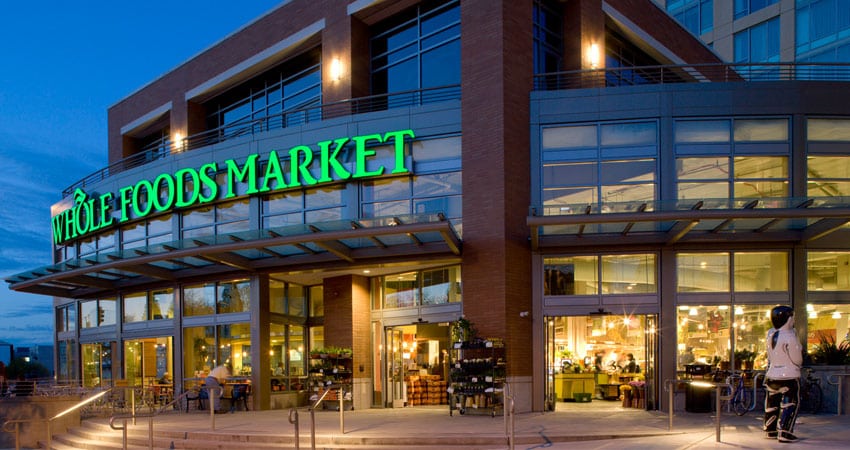Today the $13.7 billion Amazon-Whole Foods combination is final, and already major changes are underway in terms of pricing policy, as well as the use of Whole Foods stores as pickup and return locations for Amazon orders and as distribution points for same-day food deliveries.
Just days after final shareholder approval and antitrust review from the government, Amazon has gotten busy remaking Whole Foods as an important cog in its never-ending empire.
In a March report from Citi Research, Whole Foods was ranked at the bottom of the list of grocery giants that were best equipped to capitalize on the growth of online ordering. Not surprisingly given its ecommerce investments, Walmart topped the list, with Kroger scoring high as well. But with Amazon at the helm of Whole Foods, that equation could change quickly.
“We’re determined to make healthy and organic food affordable for everyone. Everybody should be able to eat Whole Foods Market quality—we will lower prices without compromising Whole Foods Market’s long-held commitment to the highest standards,” said Jeff Wilke, CEO of Amazon Worldwide Consumer, in a prepared statement. “To get started, we’re going to lower prices (today) on a selection of best-selling grocery staples, including Whole Trade organic bananas, responsibly-farmed salmon, organic large brown eggs, animal-welfare-rated 85% lean ground beef, and more.”
This move is intended to address Whole Foods’ ironic moniker as Whole Paycheck, based on its high prices, right out of the gate. In addition to a challenge to mainline grocery giants like Walmart, Kroger and Koninklijke Ahold N.V. (Dutch owners of Stop & Shop and Giant chains, among others), it also puts heat on other specialty, health-focused chains like Trader Joe’s and Sprouts Farmers Markets.
And as in other categories, the pricing move shows Amazon’s willingness to sacrifice margin in the short term to steal away market share.
In other makeover moves, Amazon will sell Whole Foods’ private-branded products through AmazonFresh, Prime Pantry and Prime Now as well as through its main website. While some of those orders can be fulfilled locally from Whole Foods’s 450 U.S. stores, Amazon will need to add a network of specialized, temperature-controlled food DCs, as Walmart and others now have in place.
Whether Amazon hires dedicated personnel for store fulfillment or cross-trains existing store associates – the more likely scenario – remains to be seen.
Some Whole Foods stores will get Amazon lockers for pickup and return of Amazon orders, although where, how many and how soon remains unclear. Lastly, Amazon Prime will become the new de facto rewards program for Whole Foods, a change that will take some integration wrangling but is another perk sure to add stickiness and draw in new members.
While there are certainly a number of logistical issues, significant corollary investments and speed bumps ahead, Amazon is certainly up to the challenge and has been preparing for this for some time. As in many other sectors it will be a major disruptor to grocery, and especially grocery delivery, for years to come.

